Sensors already equip a range of tools to enhance monitoring capacity for conservation. Some of the higher bandwidth technologies, like camera traps and acoustic monitoring systems, have been essential elements of the conservation toolkit for decades, and thus have enough users that we've created dedicated WILDLABS groups to address them. But a whole range of lower bandwidth sensors beyond these core technologies are being increasingly integrated into conservation monitoring systems, and offer rich new insights into the wildlife and ecosystems we're all working to protect. As with many technologies, cost and access have historically been challenges to the adoption of new sensors, but with low-cost and open-source solutions on the rise, we're excited to see what the future of this space holds.
Getting Started with Sensors:
- Watch Shah Selbe's Tech Tutors episode on scaling FieldKit, an open-source conservation sensor toolbox, from a project to a successful conservation tech product.
- Check out our Virtual Meetup about Low-Cost, Open-Source Solutions in conservation tech, including a talk by Alasdair Davies on the Arribada Initiative's work with thermal sensors in early warning systems.
- For a more in-depth introduction, watch the first video in our datalogger mini-series: Freaklabs: How do I get started with Arduino?
In this group, you'll meet others who are using and innovating diverse sensors in their work, discuss ways to make sensors more effective & accessible for conservationists, learn about what sensors are already helping us accomplish in the field, and have the opportunity to ask and answer questions. Join this group to get started!
Header image: Emma Vogel, University of Tromsø
No showcases have been added to this group yet.
- 0 Resources
- 0 Discussions
- 8 Groups
- @MandyEyrich
- | She/Her
University of Florida (UF)
Bridging industries with 15+ years of cross-sector expertise specializing in user-centric technology and product strategy, UX research, UX/UI design, process optimization, and end-to-end agile product development moving from ideation to iteration.
- 0 Resources
- 0 Discussions
- 26 Groups
Sustainability Manager for CERES Tag LTD. An animal health company; animal monitoring, conservation, & anti-poaching/ rural crime. Wildlife, livestock, equine & companion. #CeresTrace #CeresWild #CeresRanch





- 2 Resources
- 20 Discussions
- 23 Groups
- @SimonsVictor
- | Marsha
I'm passionate about wildlife and animal management on development of conservation strategies for a long time monitoring
- 0 Resources
- 0 Discussions
- 8 Groups
- @FiPatterson
- | She/Her
National Scientific and Technical Research Council of Argentina (CONICET)
PhD student from Argentina researching how small desert rodents navigate extreme climatic conditions in the current context of climate change. My research focuses on ecophysiology (i.e. field respirometry) and ethology (i.e. telemetry, accelerometry)
- 0 Resources
- 1 Discussions
- 5 Groups
- @serena.le
- | she/her
Conservation tech enthusiast
- 0 Resources
- 0 Discussions
- 24 Groups
- 0 Resources
- 0 Discussions
- 22 Groups
- @lampros
- | He/Him
I am a Data and Remote Sensing Analyst specializing in programming (R, Python) at Monopteryx, contributor to open-source projects related to machine-, deep-learning, remote sensing and interested in Biodiversity
- 0 Resources
- 4 Discussions
- 10 Groups
- @srankin
- | she/her
NOAA Fisheries
Bioacoustics researcher with the National Oceanographic and Atmospheric Administration (NOAA).
- 0 Resources
- 2 Discussions
- 16 Groups
- @tkswanson
- | she/her
San Diego Zoo Wildlife Alliance
Research Coordinator II for the Conservation Technology Lab at SDZWA

- 2 Resources
- 2 Discussions
- 7 Groups
Software engineer working on natural resource management technology.
- 0 Resources
- 3 Discussions
- 6 Groups
My research focuses on using Next-Generation Sequencing (NGS) to study endangered species, including carnivores, chiropterans (bats), and lizards, as well as their microbiomes.
- 1 Resources
- 4 Discussions
- 19 Groups
In our new From the Field series, we're speaking with WILDLABS members to discover how they use technology in their work. Through these interviews we will be showcasing the variety of technologies our members are...
22 March 2017
Are you ready for this year's #Tech4Wildlife Photo Challenge? In anticipation, we're counting down our ten favourite entries from last year. Do you think you can top these?
1 March 2017
There’s no doubt about it. Bees are an important and integral part of our ecosystem, and their role as pollinators an incredibly important one. If you’re a fan of the popular TV drama series Doctor Who, you may be...
20 December 2016
The Conservation Leadership Programme (CLP) is a training and capacity building programme that targets individuals from developing countries who are early in their conservation career and demonstrate leadership...
21 November 2016
Technology by itself will not save pangolins or elephants, but it can help make major progress.
14 November 2016
Do you work on conserving Neotropical migratory birds? Do you need funding? Why not apply for a grant from the U.S. Fish and Wildlife Service through the Neotropical Migratory Bird Conservation Act's grant program? The...
8 November 2016
As a visiting research scholar with UNODC, Isla Duporge asked wildlife crime experts about their experiences using remote sensing technologies to combat illicit wildlife and forest activities. In this article, Isla...
7 November 2016
Seabirds are killed in longline fisheries at such a fast rate that albatrosses cannot breed fast enough to rebuild populations. Solutions exist to prevent this “bycatch”; current best practice recommends fishing...
5 August 2016
Caves don't tend to be well-liked ecosystems, being extremely dark, often quite cramped, and slippery. And the creepy-crawlies that live within them can be the stuff of nightmares. Nevertheless, one's attitude towards...
25 July 2016
More than half of all primate species are endangered, including our closest living relative, the chimpanzee. Could Passive Acoustic Monitoring (PAM) be applied to primates as well as it has been for other taxa? In this...
29 June 2016
How do new colonies come about? And why do we observe young colonies to grow much more rapidly than their own production of chicks would allow them to? As Jana W. E. Jeglinski explains, cutting edge developments of...
25 April 2016
The Captain Planet Foundation is offering EcoTech grants in the amount of $2,500 to engage children in inquiry-based project in STEM fields.
18 February 2016
August 2025
event
September 2025
event
March 2026
September 2024
17 Products
Recently updated products
121 Products
3 R&D Projects
84 Organisations
Recently updated products
Recently updated R&D Projects
Recently updated organisations
| Description | Activity | Replies | Groups | Updated |
|---|---|---|---|---|
| Have you ever wanted to get a sample from the top of a tree, without having to climb it or shoot it out with a shotgun? Would it... |
|
Sensors | 4 years 9 months ago | |
| Hello Rob, I have seen the bracelet style used on large mammals with mixed success and failure. The main considerations are terrain the animal uses, and fitting the bracelet... |
|
Sensors | 4 years 9 months ago | |
| Amazing stuff Andrew! The dips in light idea made me think of exoplanet hunting straight away! Such a cool idea!! |
|
Sensors | 4 years 10 months ago | |
| Hi Akiba No worries, thanks for responding! I'd love to delve into more detail on this once the new series has started and I have an idea of the tools and kit required!... |
|
Open Source Solutions, Sensors | 4 years 11 months ago | |
| Hi Maxine, There are pros and cons to switching regulators and linear regulators. Linear regulators "throw away" the excess voltage in order to maintain a... |
|
Open Source Solutions, Sensors | 4 years 11 months ago | |
| Hi. I've been following the opencollar initiative and was wondering what the current status is. The project looks amazing! |
|
Sensors | 5 years ago | |
| Hi all, Some ETAG rfid-readers developped by Eli Bridge et al. are now avaible at https://www.labmaker.org/collections/earth-and-ecology/products/etag. The price is high,... |
|
Sensors | 5 years ago | |
| Hi all, Some ETAG rfid-readers are now avaible at https://www.labmaker.org/collections/earth-and-ecology/products/etag. The price is high, though: USD139. Yvan |
|
Sensors | 5 years ago | |
| I'd love to chat more! I'll be reaching out soon! |
|
Sensors | 5 years 1 month ago | |
| Yes im hoping the power bank and a few extra mp3s will get it done this year. will look into a better system this winter now that I have some help:) |
|
Sensors | 5 years 3 months ago | |
| Please see my edits above |
+4
|
Sensors | 5 years 3 months ago | |
| We are developing a Raspberry Pi 4 sized SDR --- frequency range 20Mhz-6GHz. Rx Sensitivity around 120 --- higher is possible with some... |
|
Sensors | 5 years 3 months ago |
Anti-poaching poison detection sensor for temic & karbadust (carbamate)
28 December 2023 2:52pm
Apply to Beta test Instant Detect 2.0
11 May 2023 10:55am
Low-cost hydrophone - Invitation to tender
15 December 2023 9:28pm
Thermal cameras for monitoring visitors in highly vulnerable conservation areas
21 June 2022 3:44pm
22 September 2023 12:00pm
I would be interested how you setted up this system. Which model do yu use and how are they connected?
6 October 2023 12:27pm
We have the the FLIR FC series (FC 618) thermal cameras setup. with regards to the connection between the cameras and monitoring station, this through fiber cable and microwave radio links.
15 December 2023 8:09pm
Hi,
This is a really late answer but I was new to wildlabs then. I have a security appliance that uses state of the AI models and user defined polygon areas of interest that generates video alerts of intrusions in typically under a second.
Although its setup to install automatically on an NVidia AI on the edge boxes of your intentions were to monitor a great deal of cameras you could also install it on a desktop with a high end GPU for very high performance. At home I use a desktop with an rtx 2080ti and monitor around 15 cameras and a thermal imaging camera (old one).
I have also tested a high end model (yolov7) on a high end thermal imaging camera image and it works fine as well.
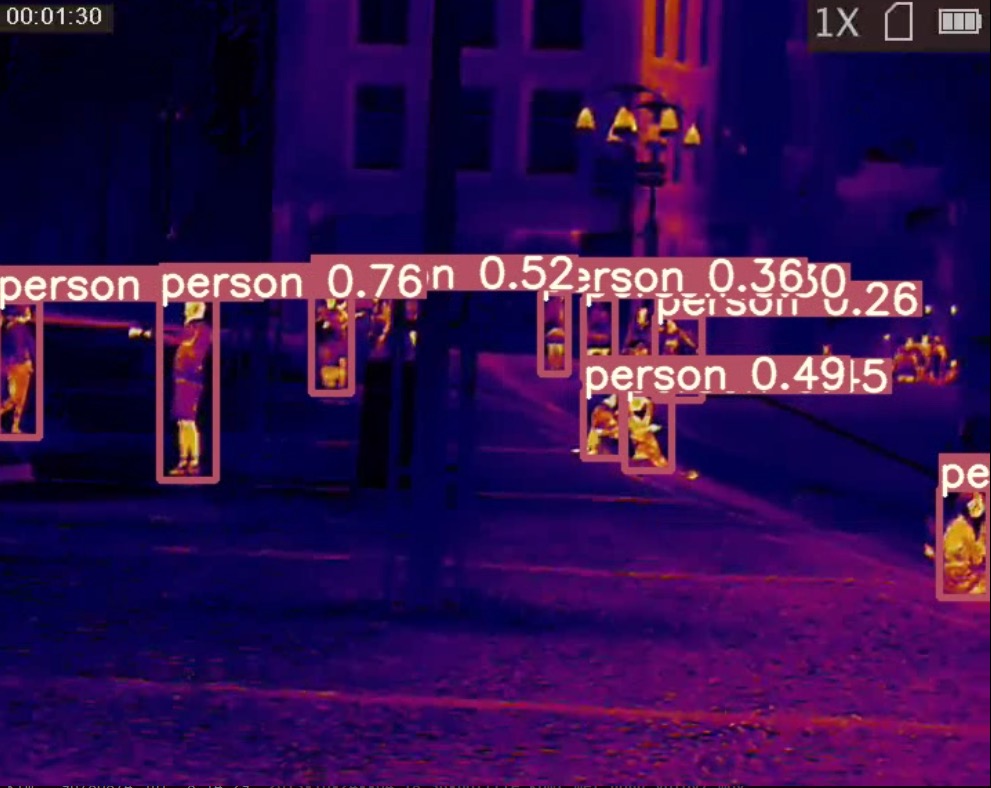
Thermal imaging cameras are hellishly expensive though and I’ve found that new extremely light sensitive cameras like the HIKvision colorvu series almost obsoletes them in terms of people detection at night at a fraction of the cost.
If you are interested I’d be happy to show you a demo in a video meeting sometime if you like. I’m pretty sure it would meeting all your intrusion detection and alerting needs.
My project page is
Shedding light on nocturnal behaviour: A cost-effective solution for remote, infrared video recording in the field
13 December 2023 5:55pm
Data Viz Inspo for the Holidays
11 December 2023 8:42pm
Autonomizing Small Mammal Traps
29 November 2023 6:26pm
1 December 2023 7:37pm
One thing to keep in mind is that researchers often want or at least would like to get certain metadata on the tagged animals like sex, size, weight, apperent fitness etc. Without these the questions you can ask can get rather limited. Also, it will also often be highly desired to take samples like blood, hair, other tissue e.g.
In addition, there can be cases where it may be better not to tag the animal if it is not the right age group, is too small to carry the tag, seems like it is not in a good shape etc.
I think it will take quite an effort to get automated systems (capture robots) to make these decisions to a degree you can trust.
Cheers,
Lars
9 December 2023 9:01pm
Thanks for the reply, Lars! I appreciate the input I am genuinely curious if there is a market for such a thing, all data is good data.
10 December 2023 2:30am
I always thought a tracker that attached like a slap bracelet would be sweet.
Remote weather stations
21 March 2018 7:48pm
28 November 2023 2:29pm
While pretty expensive, everyone I know has had good experiences with the HOBO weather stations and can be customizable if needed. Would still be my rec if you need something ASAP
30 November 2023 1:30am
Hi Carly, thanks for this. I forgot to mention HOBO in my original post, but I had them down as the main available option. Think it might have to be them, I'll have to check for $ down the back of the sofa...
1 December 2023 4:55pm
I came across this which looks like it might work for you.
Others have mentioned Davis. I used the Davis vantage pro2 in a previous life, and the cabled version was about USD200 IIRC. However, it must operate with a display console, which can take an optional data logger, but the console is intended to be kept indoors. This means providing a weatherproof enclosure for it in the forest, in addition to a mast for the anemometer etc.
WILDLABS Awards 2024: Supporting accessible, affordable, and effective innovation for nature
1 December 2023 11:00am
Wishlist for kit in a field-based Research Station or tech testing space?
27 November 2023 10:41am
28 November 2023 3:25am
Regine Weckauf over on linkedin:
'Little to do with research and tech development, but given how hard it is to attract and retain experienced staff to field based positions, I know it makes a difference how nice the space is. Just because it's the "field", shouldn't mean staff living in basic conditions, regardless of how many times we've been told to see it as a badge of honor. If you have the money, put in nice bathrooms, kitchen, living spaces, and private accommodation. Maybe even a nursery? It creates more local employment opportunities and people genuinely want to visit.'
28 November 2023 2:25pm
Love the idea for in-house gear/supplies! It can be SOO difficult to travel with batteries, electronics parts with airline regs, country policies, etc. and shipping recorders/trail cams/etc. gets VERY (prohibitively) pricey in some countries with customs and taxes. Would be great to have an in-country place to source that kind of equipment.
Housing educational resources related to that tech (in the form of people, print materials, computer tutorials) in-house would be similarly awesome. Particularly/especially in local languages.
Having in-country wet labs as well helps the eDNA/genetics folks, since sample import/export permitting can be (always seems to be?!) a nightmare, so if you can even just do PCR and/or extractions in-country that helps a ton.
In terms of overall field-station-wishlist - honestly, just the promise of continued funding and staff. Every field station I've been to or worked at is in a constant search for enough money to get through the next month/year, because the funding comes in the establish a station but then not to maintain it long-term. It's not sexy for a wishlist per se, but boy is it over-looked and much-needed.
@hikinghack from Dinalab would probably have lots of good insights on this!
29 November 2023 7:59pm
My suggestion would probably be a 3D printer and Solder Station with a stock of common components. With those two things you can solve most problems.
Paving the Way for Women: LoRaWAN Technology in Akagera National Park with Clementine Uwamahoro
 Esther Githinji
and 1 more
Esther Githinji
and 1 more
29 November 2023 5:22pm
Tenure Track Scientists (Sensing, Robotics, Machine Learning) - AOPE, WHOI
27 November 2023 9:21am
ICOTEQ launch TAGRANGER® system of products
23 November 2023 1:25pm
AWMS Conference 2023
Insight; a secure online platform designed for sharing experiences of conservation tool use.
7 November 2023 1:01pm
Digital Signals Processing - free online textbook
31 October 2023 1:50pm
Project Update: Improving satellite ear tag transmitters for Polar Bears
6 October 2023 1:42pm
7 October 2023 3:45pm
Just when I thought I couldn't get any stupider Steph...at least I am improving at something I guess...
13 October 2023 10:57am
Hey Rob! I also missed this variety hour thinking it was the next day. I enjoyed the recording on youtube though!
Your thoughts on distributing the components to both sides of the ear is interesting. One thing to consider is heat dessipation, I believe. I believe it is important to consider how heat conducting the part going through the ear is. A few cables would perhaps be OK. Ruggedness should have a very high priority and the more compact the device is the better, I would think.
Interesting stuff you shared about the antenna!
Cheers,
Lars
20 October 2023 3:00pm
Cheers @Lars_Holst_Hansen , yes, the antenna foam spacer idea certainly helped us a bit. I completely agree though that ruggedness, especially on a polar bear (a bit different from a koala 'bear') is a top priority, so there's a lot to consider.
Rob
Song Meter Micro experience?
27 October 2022 6:33pm
11 May 2023 4:45pm
Hi Lucy,
Sorry! I was in the field by the time you replied, and have not been back long. I realise it's been months now, but are you still planning on using the SM Micros? If so, please have a look at my thoughts in the new comment on this thread. I would think in Norway, the stridulating insect issue would not be as bad as in the tropics. Depends on what you want to use them for. Battery life is still definitely an issue though, and even more so in low temperatures. Good luck, let me know how you get on, or if you went with a different recorder.
Cheers,
Nick
26 September 2023 5:55am
Hi everyone. I am suuuuuper late on this discussion but I just finished 6-month fieldwork deploying 18 SM Micro over 70 different locations in Java, so I thought I would like to share my opinion on this device. So my work is basically installing each recorder in one location for the duration of 7-14 days before moving it to a different location, with battery and silica gel changed in between every deployment. Here's my thought:
Waterproofing - The first 2 months of the fieldwork was the wettest season I have ever experienced in the field. Extreme rain almost on a daily basis. Most of the time the recorder was working just fine except for the 2nd week of deployment when I found the inside a bit wet, but it was probably because I forgot to ensure that both lids were clicking. The recorder still works fine after this deployment, and this was when I decided to change the silica gel before the next deployment.
Sound quality - As mentioned by others. there's an annoying peak at 6kHz. I did not originally plan to do soundscape analysis so it wasn't a big problem at the beginning, but now there is some discussion on doing so. Other than this I found the quality to be just adequate.
Battery Life - I am using alkaline 1,5 volt (non-rechargable) battery and get ~120 hours of recording, with a sample rate of 32khz. Suitable for my method, but certainly not for longer deployment.
Safety - My field site is full of a poacher who does not like to be detected, and the rangers warned me so many times about the camera trap that was destroyed or stolen by these people. I used steel cable and a small carabiner-style padlock which I later realized wouldn't stand a chance against a few hits of the machete, but luckily no recorder went missing--mostly because I tried to hide it as far as possible from the trails and cover our tracks. The small size of SM Micro makes it easy to hide among foliage (be careful on contact noise between leaves and recording), and the fact that it is colored green and has no external light also greatly helps (unlike Swiftone. Seriously, who thought that white is a perfect color for an expensive device that will be left in the forest for a long time?)
In conclusion, it is a cheap and easy-to-get device (compared to the mythical Audiomoth) for species presence detection in a short time like I did, but certainly not for longer deployment or more intricate bioacoustic analysis.
6 October 2023 9:08pm
Hi everyone,
I wanted to provide an update on behalf of Wildlife Acoustics regarding some of these comments in this thread. As some of you may know, we have just announced the second generation of our Song Meter Micro. Along with 33% longer battery life due to an expanded battery tray (which now holds 4 AAs instead of 3), the Song Meter Micro 2 will also have a flatter frequency response. Though we don’t have a firm release date at the moment, we are currently looking at an early 2024 release, with pre-orders likely to start at the end of 2023. Detailed frequency response charts and specs will also be posted to our site soon. In fact, we have built an anechoic chamber in our new office and will be doing detailed testing with a host of new precision instruments. For more info on the Micro 2, check out our current product page. Lastly, thanks all for your open and honest feedback. It allows us to make our products better and better for you.
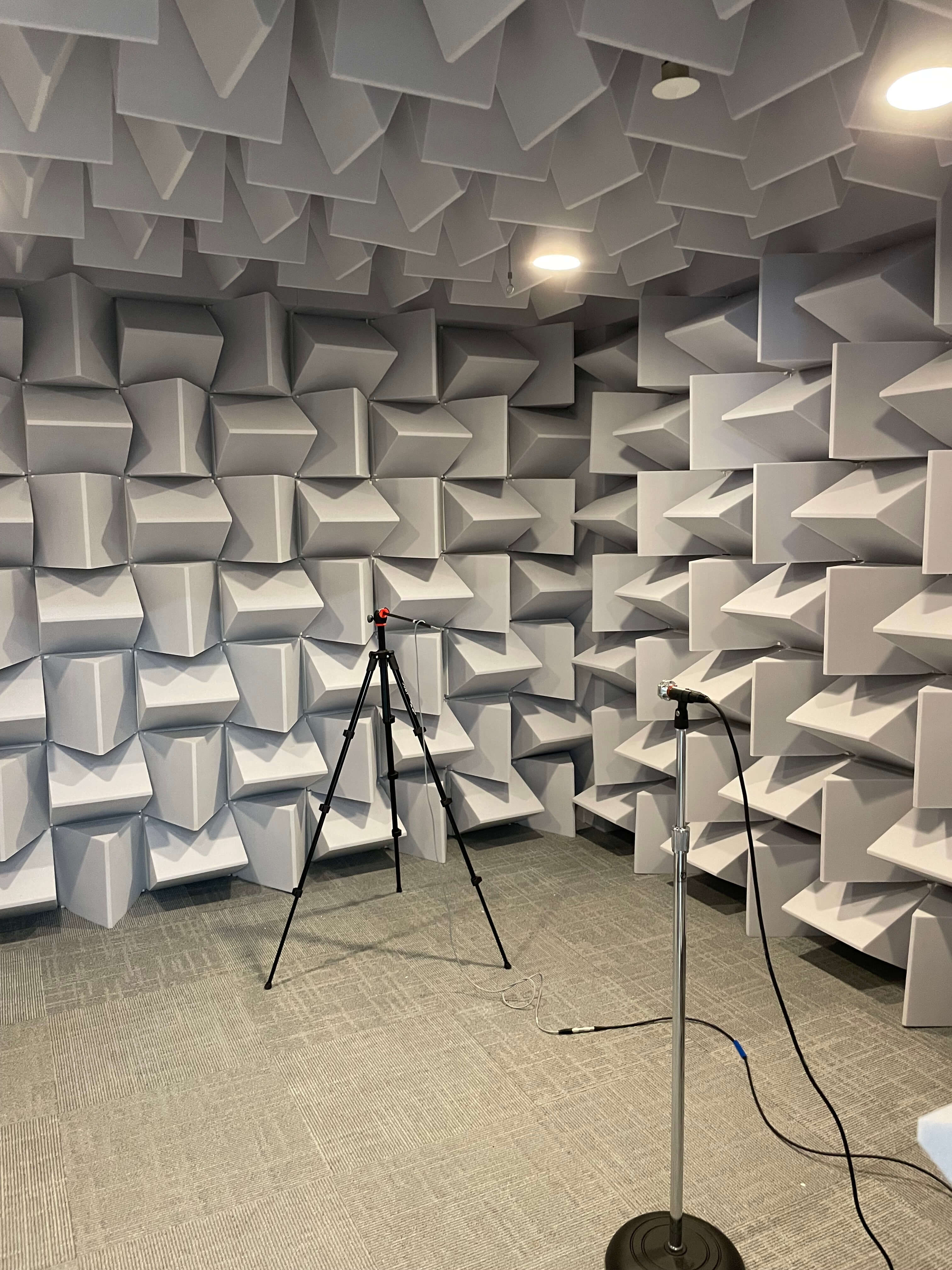
Unravelling freshwater turtle activity with an open source, low-cost accelerometer
6 October 2023 1:04pm
1st Wildlife Scientific Conference 2023
25 September 2023 11:10am
Best Temperature/ Humidity Dataloggers
24 April 2023 1:30pm
11 September 2023 2:49pm
Heya Nick - ooh cool! We thought about the Kestrels but I had heard about some of the problems with them maxing out at 100. Have gone for HOBO Pro V2s
11 September 2023 2:51pm
Heya Matthew cheers for providing a comparison! We went with HOBO Pro V2s which are more expensive but have been working well so far!
23 September 2023 6:14am
Makes sense if you have the cash...
*NEW* White Paper: Harnessing the Power of Sound & AI to track Global Biodiversity Framework (GBF) Targets
20 September 2023 12:53pm
Gundi: The Universal Adaptor for Conservation Technologies
13 September 2023 4:28pm
A low-cost, long-running, open-source stereo camera for tracking aquatic species and their behaviours
5 September 2023 12:15pm
Innovation in Environmental Monitoring
31 August 2023 11:31pm
Live Streaming from a Remote Location (no cell tower access)
15 July 2023 1:18am
29 July 2023 1:29am
"The WiFi Solar Camera comes loaded with various features such as live monitoring ( via smartphone app ), motion sensor recording and notification alerts on detected movement, night vision, cloud storage of footage, an audio system to facilitate communication"
WiFi Solar Camera PTZ (3MP)- Metal Casing White – Simply Online Australia
WiFi Solar Camera PTZ (3MP)- Metal Casing White – Simply Online Australia
29 July 2023 8:43am
Hi Colin, Many thanks for your replies. Yes, Starlink provides full internet access. Our current Wifi Nest camera contains a web server & provides a html code to embed the live stream into a web page for public access. Most security cameras, due to privacy reasons, do not stream to a web page without requiring a username & password. Not a viable solution for public viewing.
We are looking for a camera with PTZ functionality that can stream to a web page without requiring a username & password.
Cheers, Graeme
11 August 2023 12:27pm
Graeme, Maybe speak to a web IT expert. You may be able to have an interface on the webpage which provides the login credentials to the camera, but then passes the image (and control) to another page. Make a "masking" page that keeps the camera happy, but access and control is via another page.
Human-Elephant Conflict Tech Solution in Tsavo: NdovuCare
 Esther Githinji
and 1 more
Esther Githinji
and 1 more
7 August 2023 1:36pm
30 April 2024 12:48am
9 May 2024 1:56pm
15 May 2024 9:34am
#Tech4Wildlife Photo Challenge: Community Choice Honorees
3 August 2023 10:00am
Live Streaming Camera
31 July 2023 11:36am
Senior Technical Specialist, Monitoring & Technology, ZSL
18 July 2023 1:44pm








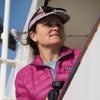



































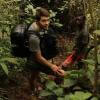





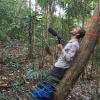






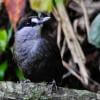

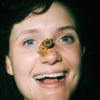


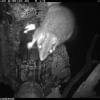
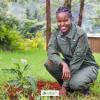

21 December 2023 3:48am
Will you accept personal/hobbyist focused on conservation on their small plots of land (10-100 acres)?
I would, and know others, who would happily pay more than the official conservationists rate for the service, which could help to further subsidize the project. (Referring to your statement here: https://wildlabs.net/discussion/instant-detect-20-and-related-cost)